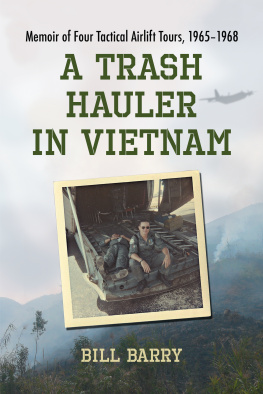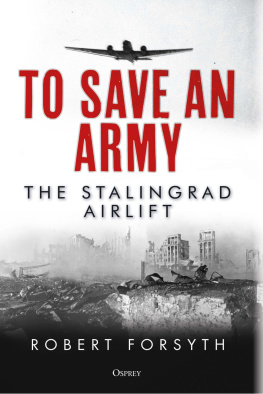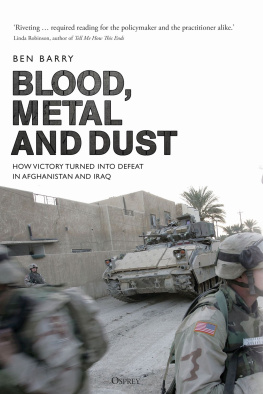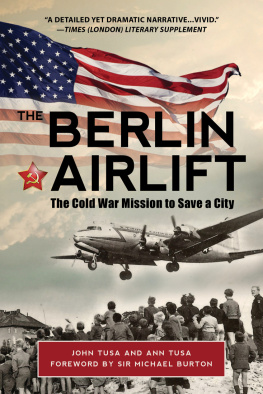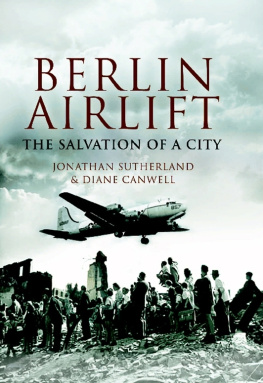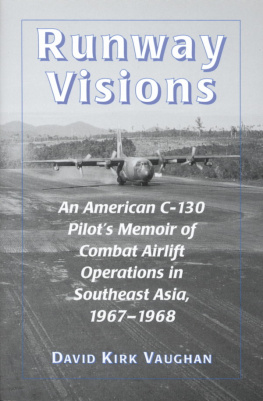
Table of Contents
LIBRARY OF CONGRESS CATALOGUING-IN-PUBLICATION DATA
Young, Thomas W., 1962
The speed of heat : an airlift wing at war in Iraq and Afghanistan / Thomas W. Young.
p. cm.
Includes bibliographical references and index.
ISBN-13: 978-0-7864-3798-6
1. Iraq War, 2003 Personal narratives, American. 2. United StatesAir National Guard. I. Title.
DS79.76.Y68 2008
956.704'4348 dc22 2008008048
British Library cataloguing data are available
2008 Thomas W. Young. All rights reserved
No part of this book may be reproduced or transmitted in any form or by any means, electronic or mechanical, including photocopying or recording, or by any information storage and retrieval system, without permission in writing from the publisher.
Cover photograph: C-130 Hercules aircraft from the West Virginia Air National Guard return to Martinsburg on August 1, 2003 (courtesy the 167th Airlift Wing). Front cover by TG Design
McFarland & Company, Inc., Publishers
Box 611, Jefferson, North Carolina 28640
www.mcfarlandpub.com
For my squadron mates, past and present.
And to the memory of Major Brian Downs,
a former member of the 167th Airlift Wing,
killed in Iraq on Memorial Day, 2005.
Acknowledgments
First and most important thanks must go to my wife, Kristen, who provided so much invaluable assistance suggesting improvements, editing, and selecting photos that shes practically a co-author.
I also extend warmest gratitude to neighbor and fellow UNC alum Elizabeth Lee for her rigorous proofreading, and also to former squadron mate Joe Myers for his attention to detail in reading the manuscript.
Thanks also to others who made suggestions for fine-tuning the book. They include Dick Elam, Laurel Files, Steve and Jodie Forrest, Janet Murray, Jim Marrs, and Jim Vergilio.
For help with photos, many thanks to Emily Beightol-Deyerle, Andy Schmidt, Bud Martz, John Alderton, and Tony Henry.
Additionally, thanks to Andrew Carroll, editor of bestsellers War Letters and Behind the Lines, for his encouragement and kind wordsand for his tireless work to honor American veterans and to preserve their war letters.
There arent a lot of movies made about airlifters. Theres no Twelve oClock High or Top Gun about those heavy aircraft, but despite their lack of glamour, they are arguably the most potent tool this nation has for shaping the international arena.
Air Force Secretary Sheila E. Widnall, in a December 3, 1996, address at American University in Washington, D.C.
Airlift is the cornerstone of our nations ability to project military power worldwide. Airlifters transport troops and equipment from our nation to foreign shores, evacuate wounded soldiers, sailors, airmen, or Marines and resupply forward-deployed ground forces. The capability to conduct global, sustained airlift operations, in hostile or permissive environments, is unique to the United States and is critical to achieving our national objectives.
Air Force Manual 3-3.35B, Combat Aircraft Fundamentals
Preface
Many things make the United States a military superpower, and not all of them involve directly engaging the enemy in combat. Airlift, the movement of troops and cargo, ranks high in the equation. With its fleet of large transport aircraft, the United States can put personnel and equipment anywhere on the globe within a matter of hours. Thats the mission of the service members whose first-person accounts make up this oral history.
Books and media coverage on the wars in Iraq and Afghanistan have focused mainly on the ground forces, and rightly so. The people carrying the rifles also carry the greatest burden of risk and hardship. When reporters and academics do turn their attention to air operations, they usually focus on fighter planes and bombers. Bookshelves and journal articles reveal little about airlift forces, although no other part of the military machine can operate without them.
Practically every soldier, every bullet, every pint of blood, every bite of food arrives in the war zone by airlift. Transport aircrews accompany the troops from the beginning, flying them in, supplying them, bringing them out for medical treatment or rotations home, and in the most heartbreaking missions, carrying them on their final journey back to grieving relatives.
This book is the story of one airlift wing, as told by its members. The 167th Airlift Wing of the West Virginia Air National Guard consisted of a squadron of twelve C-130 cargo planes and their crews, plus all the supporting sections, such as maintenance, motor pool, aeromedical, and civil engineeringin all, more than twelve hundred people. A former Associated Press reporter turned aviator, I flew as an active member of that unit.
For this book, I interviewed nearly seventy servicemen and women. Most of them deployed to the Middle East at various stages of the Iraq and Afghanistan wars, and many volunteered for multiple deployments. Some went directly into harms way, coming under fire in various circumstances. Others performed critical functions outside combat areas, in locations such as Uzbekistan, Kuwait, and Pakistan. In these interviews, fliers tell of dodging missiles fired at their C-130s, mechanics talk about making combat repairs, nurses discuss saving lives, and two motor pool truck drivers describe the explosion of a roadside bomb. Other interviewees illustrate the variety of specialties connected with the airlift mission, such as civil engineers who design airfields, security policemen who guard planes, instructors who teach troops how to watch for roadside bombs, and commanders who run forward air bases.
This oral history serves three important goals. The first is to provide historians and laymen a portrait of airlift operations, a military mission thats crucial but not well known outside the Air Force. These eyewitness accounts are a resource for researchers who want more than facts and dates, for people who want to understand the role of airlift and how this critical function works. By focusing on the experiences of one airlift wing, the book illustrates airlift in general, capturing a snapshot of this seldom-publicized mission.
The second goal is to show an airlift wings uniquely broad perspective on war. Because of the nature of this units work, its personnel were not only participants in the conflicts, but witnesses on a grand scale. Crews from the 167th flew into every part of Iraq and Afghanistan. They carried virtually every kind of cargo and weapon. While treating and transporting the wounded, the wings aeromedical personnel saw every kind of trauma the horrors of modern war can inflict.
The third goal is to provide insight into the motivation of an all-volunteer, wartime military and to communicate the emotions experienced by these service people as they carry out their mission day by day. The stories show what it feels like to live in a desert camp, to watch tracer fire arcing toward you, to bandage wounds of a soldier much younger than you are, to fly with near silence in the cockpit because of the flag-draped boxes in back. They show the pain and the rewards of putting years of training to work. As one sergeant states with simple eloquence, We were doing our job.
The timeline for the oral history begins on September 11, 2001, with unit members describing the realization that the nation was under attack and discussing the preparations for war that began even before the first tower fell. In the case of this Air Guard wing, 9/11 came at a time when flight crews and support personnel had polished skills to new levels, not realizing how soon they would be taking those sharpened skills to war.
Next page

